In the second of three blogs, Tijmen takes a look at all the ways The Stanley Parable (2013) lets you mess up its story. But are you really free to do anything?
This is the story of a man named Stanley.
With this one simple line, The Stanley Parable (Galactic Cafe, 2013; remastered in 2022) tells you all you need to know before it throws all conventions out of the window. There is Stanley, there is a Narrator, and there is a story to be told. From a distance, it’s as straightforward a story as they come. But then there’s you, the player, and your freedom to choose. Your presence changes everything; it’s one of those things games excel at. By contrasting your freedom against a stubborn Narrator that desperately sticks to the script, The Stanley Parable wants you to think about how games tell stories.
It’s also what makes it a worthwhile game to study in the literature classroom. Narratology – the study of storytelling – has tried to map out narrative structures in literature and film, but can it encompass video game storytelling too? I believe The Stanley Parable not only shows that it can, but that the terminology from literary studies is necessary in understanding how. But first, this first-person story game needs some introduction, so let’s start from the beginning.
The journey begins
After the opening cinematic gives a glimpse into Stanley’s boring life: he works in a big office building, pushing buttons on his keyboard, until one day all his co-workers vanish. You gain control of Stanley and start wandering the halls, as the Narrator describes your moves and provides context. A short walk leads to your first major choice. Two open doors. The Narrator interjects: “When Stanley came to a set of two open doors, he entered the door on his left.”
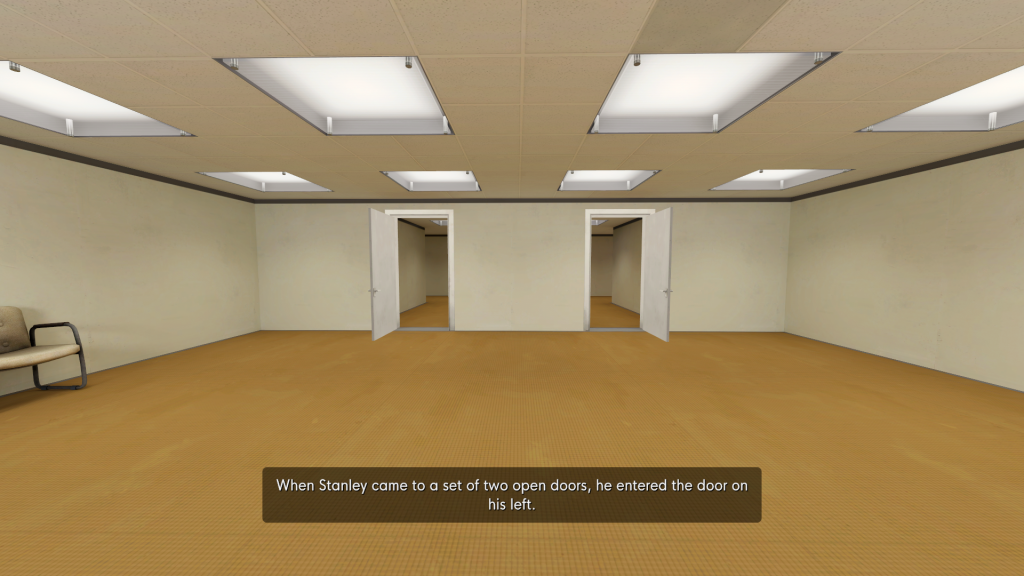
And so…
Either way, the game loops back to the start, all choices open once more. There are many more endings to find by making different choices. So, do you follow the path, or stray from it? The Stanley Parable poses this question about freedom at every turn, and only you can answer it.
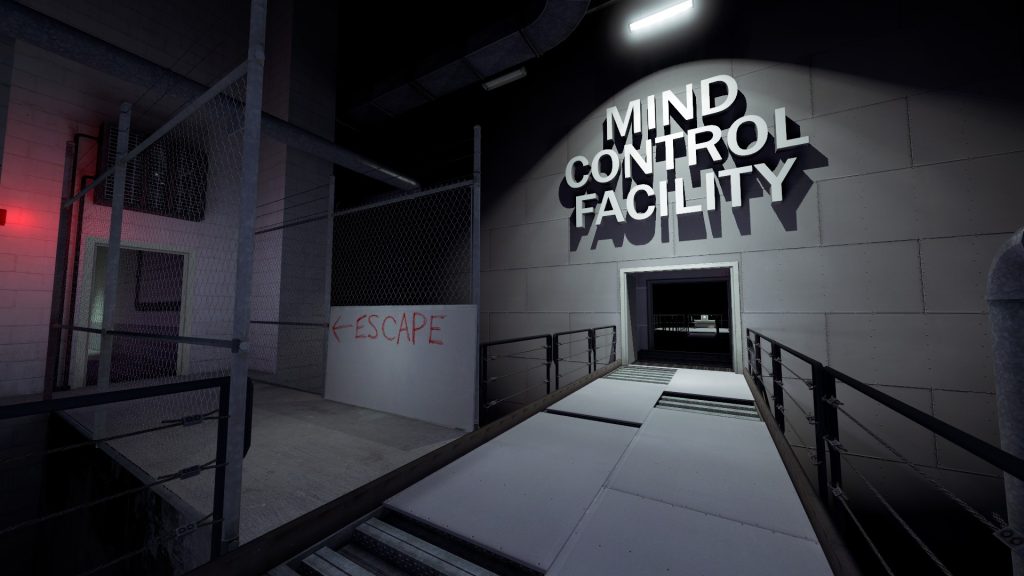
What is a story, even?
Basically any series of related events you can link together logically in your head can be a narrative. We are used to narratives being linear, because that’s how we read, watch, and tell them: with a beginning and a predetermined ending. Traditional forms of media, like books and movies, run in a single direction. Acts of rebellion – like starting a narrative midway through – feels like breaking the rules. We call such stories past narratives: the events you will experience are already decided.
In The Stanley Parable, the choices you make shape the narrative as you go. The game gives you different outcomes based on your own actions, responding in a way that so-called passive media (books, movies, music) can’t easily achieve. Any time you reach an ending, you have constructed a new self-contained narrative. Each new playthrough can result in a number of narratives. Stories with the potential to have more than one outcome are called future narratives: the events you will experience are uncertain and depend on your actions.
When the game gets weird
The Narrator is trying to tell a past narrative in a future narrative game, which generates most of the tension in The Stanley Parable. All of his narration is directive and in past tense, like it already happened: “Stanley decided,” “Stanley walked upstairs,” “Stanley exited his office,” etcetera. Doing as you’re told leads to a cutscene of Stanley walking out into the open air.
The narration makes you wonder who is really in charge. If the Narrator is almighty, then why can I defy him easily? The Narrator’s power is further undermined when he starts to address “you” (as Stanley) directly after you reject his directions. Or even guilt-tripping you in some moments, when he says: “My god, is this really how much you dislike my game?” Despite it being “his game,” he can’t stop you.
The famous Confusion Ending, unlocked after going through consecutive loops, shows that there are even higher powers at play. It leads to you and the Narrator finding a screen that predicts exactly what has happened up until that point. “That’s really how all this goes? It’s all… determined?” asks the Narrator. It makes you keenly aware that you’re playing in a fictional world built by developers, who made sure all your acts of rebellion were accounted for by the game.
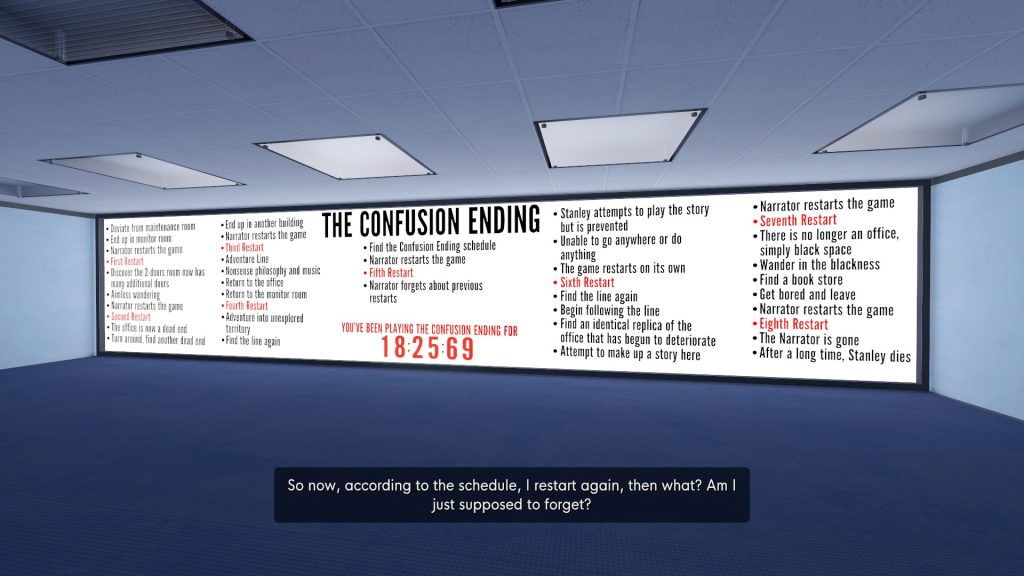
A game about games?
Just like the player has been doing, The Stanley Parable stretches its own narrative in unexpected shapes and sizes to examine what storytelling in a game can be. The game world itself also breaks conventions and questions who’s in charge. Like the moment when you stumble into a large unfinished-looking space with the default textures still on the wall. The Narrator sighs: “I haven’t even finished building this section of the map because you were never supposed to be here in the first place.”
A more striking example of getting fooled into thinking you broke the game is when you drop from an unsuspecting window into a white void, seemingly landing outside the game world. Only for the Narrator to say: “At first, Stanley assumed he’d broken the map, until he heard this narration and realized it was a part of the game’s design all along. He then praised the game for its insightful and witty commentary into the nature of video game structure and its examination of structural narrative tropes.”
Other instances include the Museum Ending, which displays concept art and 3D models from the game in an exhibition setting. Or the route that just lets you play Minecraft and Portal for a bit, crossing over into those game worlds as part of a long-winded joke. No other game (that I know of) is so varied in the way it shows what video game storytelling can look like. It’s like a celebration of the medium, flaunting all its best assets.

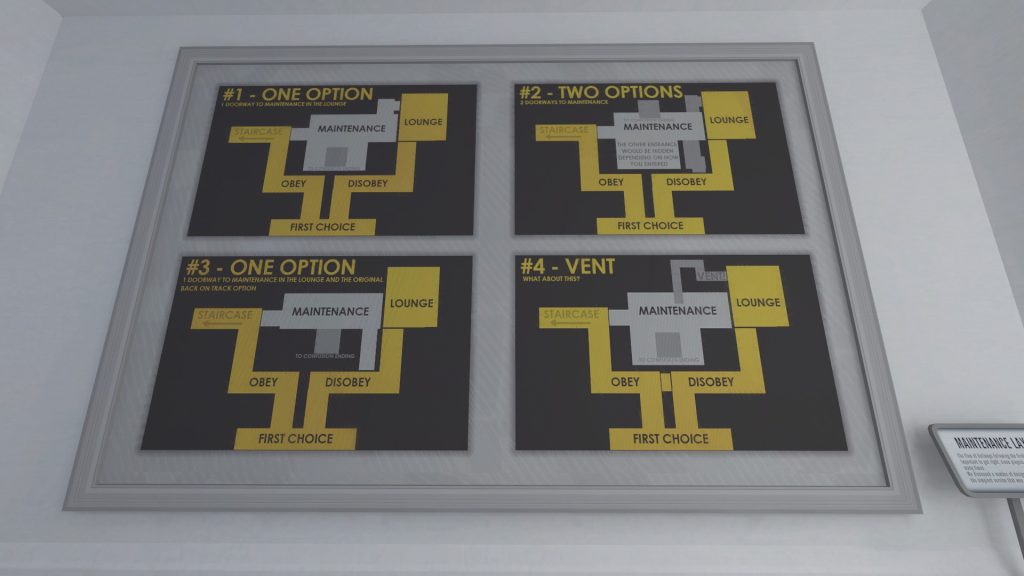
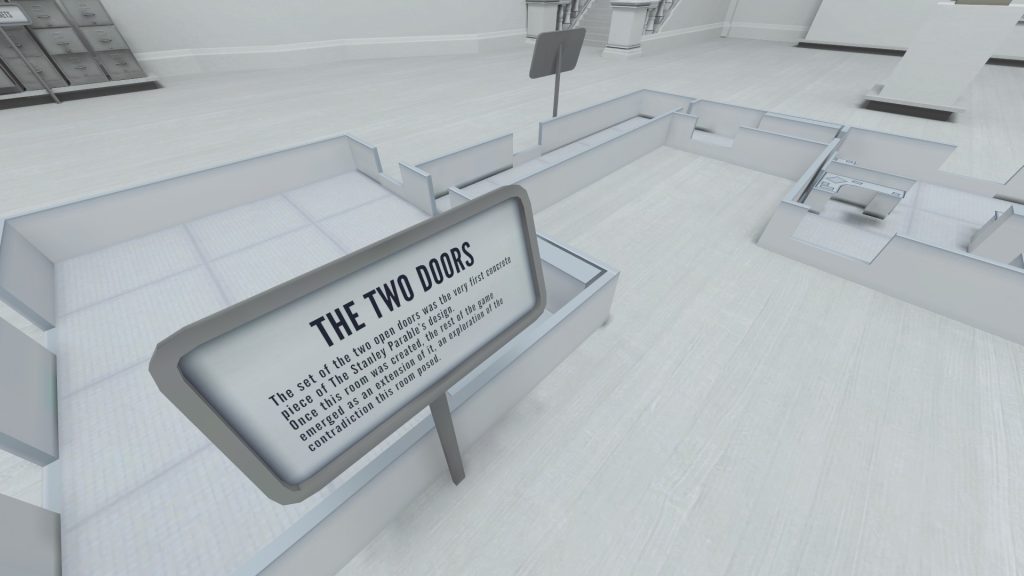
Gaming in the English classroom
By virtue of being a game, The Stanley Parable can be many things at once. It can be a straightforward narrative, as told by the Narrator. It can be a constant battle with the Narrator, as you poke at the game until it breaks (his spirit). Other times, it is Minecraft. In all instances, it draws attention to the fact you’re sitting in front of a screen playing a game.
From the distance created by these aspects, The Stanley Parable can be examined in all its complexity, not just by players, but also by academics. Academics like Astrid Ensslin, who mapped out the game’s narrative structures using narratology, show that the game engages with topics that literary studies have cared about for a long time. It’s another reason why games like this fit in the classroom. If the study of literature helps us to understand The Stanley Parable, I am convinced that the flipside is just as true.

Tijmen de Vries is currently doing an internship at VALUE. As a student of Literary Studies (MA) at the VU Amsterdam, he is on a quest to show that games are also literature. He has a love for dense RPGs, immersive worlds, and writing extensive character backstories for his D&D campaigns. In his daily life, Tijmen works as a policy advisor on all things digital & privacy for a Dutch political party, and he is involved in local politics. He lives with his cat and is currently dying a thousand deaths in Elden Ring. You can contact Tijmen on Twitter or LinkedIn.
